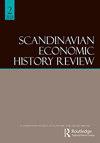1909年的挪威森林租界法和1909 - 28年的租界政策
IF 1
Q4 ECONOMICS
引用次数: 0
摘要
本文以挪威1909年的森林租界法和1909 - 28年的租界政策为例,考察了20世纪初国家资源管制的扩张。本文通过考察该法律的主要目的以及1909-28年间对森林实施的特许政策来研究该案例。1909年的森林特许权法规定了森林的销售,要求所有超过市政限制的森林财产的购买者获得特许权。对国内公司购买森林的能力设置了严格的限制,而外国公司实际上被禁止。非本地挪威公民也必须获得特许权。森林特许权法有四个目的:(1)改善当地的政治和经济条件;(2)阻止外国收购森林;(3)避免垄断和不健康的竞争;(4)避免对森林的投机。挪威的森林特许政策几乎在整个期间都是支持地方和市政森林所有权,并限制外国和国内公司对森林的所有权。在促进诸如保护农民和佃农等社会目标方面,该法律与芬兰和瑞典的森林条例类似,但在某种程度上比芬兰和瑞典的条例更具保护性。本文章由计算机程序翻译,如有差异,请以英文原文为准。
The Norwegian forest concession law of 1909 and concession policy 1909–28
ABSTRACT This paper employs a case study of the Norwegian forest concession law of 1909 and concession policy from 1909–28 to examine the expansion of state resource regulation at the start of the 1900s. The case is studied by examining the main aims of the law and what concession policy was conducted for forests between 1909–28. The forest concession law of 1909 regulated the sale of forests, requiring all buyers of forest property larger than municipal limits to acquire concession. Strict limitations were set on domestic companies’ ability to purchase forests, while foreign companies were effectively barred. Non-local Norwegian citizens were also required to acquire concession. The forest concession law had four aims: (1) Improve local political and economic conditions, (2) Stop foreign acquisitions of forests, (3) Avoid monopolies and unhealthy competition, (4) Avoid speculation on forests. The Norwegian forest concession policy was, in nearly the entire period, to support local and municipal forest ownership and restrict both foreign and domestic companies’ ownership of forests. The law was similar to Finnish and Swedish forest regulations in promoting social goals such as protecting farmers and crofters but was somewhat more protective than the Finnish and Swedish regulations.
求助全文
通过发布文献求助,成功后即可免费获取论文全文。
去求助
来源期刊

SCANDINAVIAN ECONOMIC HISTORY REVIEW
ECONOMICS-
CiteScore
1.60
自引率
16.70%
发文量
20
期刊介绍:
Scandinavian Economic History Review publishes articles and reviews in the broad field of Nordic economic, business and social history. The journal also publishes contributions from closely related fields, such as history of technology, maritime history and history of economic thought. Articles dealing with theoretical and methodological issues are also included. The editors aim to reflect contemporary research, thinking and debate in these fields, both within Scandinavia and more widely. The journal comprises a broad variety of aspects and approaches to economic and social history, ranging from macro economic history to business history, from quantitative to qualitative studies.
 求助内容:
求助内容: 应助结果提醒方式:
应助结果提醒方式:


